|
|
ADDRESS AND INTERACTION WITH THE STUDENTS OF SREE GOKULAM MEDICAL COLLEGE AND RESEARCH FOUNDATION
18-12-2005 : Venjaramoodu
Research ? Teaching - Research
I am delighted to visit and interact with the students and faculty members of Sree Gokulam Medical College and Research Foundation. My greetings to the Chairman and Members of the Managing Committee, Principal, Faculty Members, students and distinguished guests. The College has just now started with fifty students in the MBBS programme. I am sure in the years to come College will generate many more students and also undertake specialty and super-specialty programme. Since bed hospital, large amount of clinical data will be available whic the college is attached with a three hundred and fifty h can be used by the college students and faculty for research purposes on diseases pertinent to this area. Now I would like to discuss on the topic ?Research ? Teaching ? Research?.
Mission of Medical community
Dear friends, when I am in the midst of the medical community, I am reminded of the famous statement by Norman Cousins in his book ?Anatomy of the illness? Patients are today reaching out to the doctor not just for medical help. They are reaching out for kindness, assurance and hope. I would also like to share with you a quote in the paper which I came across on the topic ?One World, one people, one surgery? by Dr.T.E.Udwadia which states: ?The poorest of the poor have as much right as anyone to less pain after surgery, reduced medication, less morbidity, shorter hospitalization, and early return to home, family, and work. Minimal access surgery and the expensive technology it requires are advocated, not as homage or tribute to new technology, but in appreciation of the manifold benefits this new technology gives to our patients and our people.? This thought has to be the focus of all students and Faculty Members of this medical institution.
First I would like to discuss some of the disease pattern visible in our country, so that you will see the clinical data and try to find out the solution. First I would like to talk about tuberculosis which is prevalent in many parts of the country.
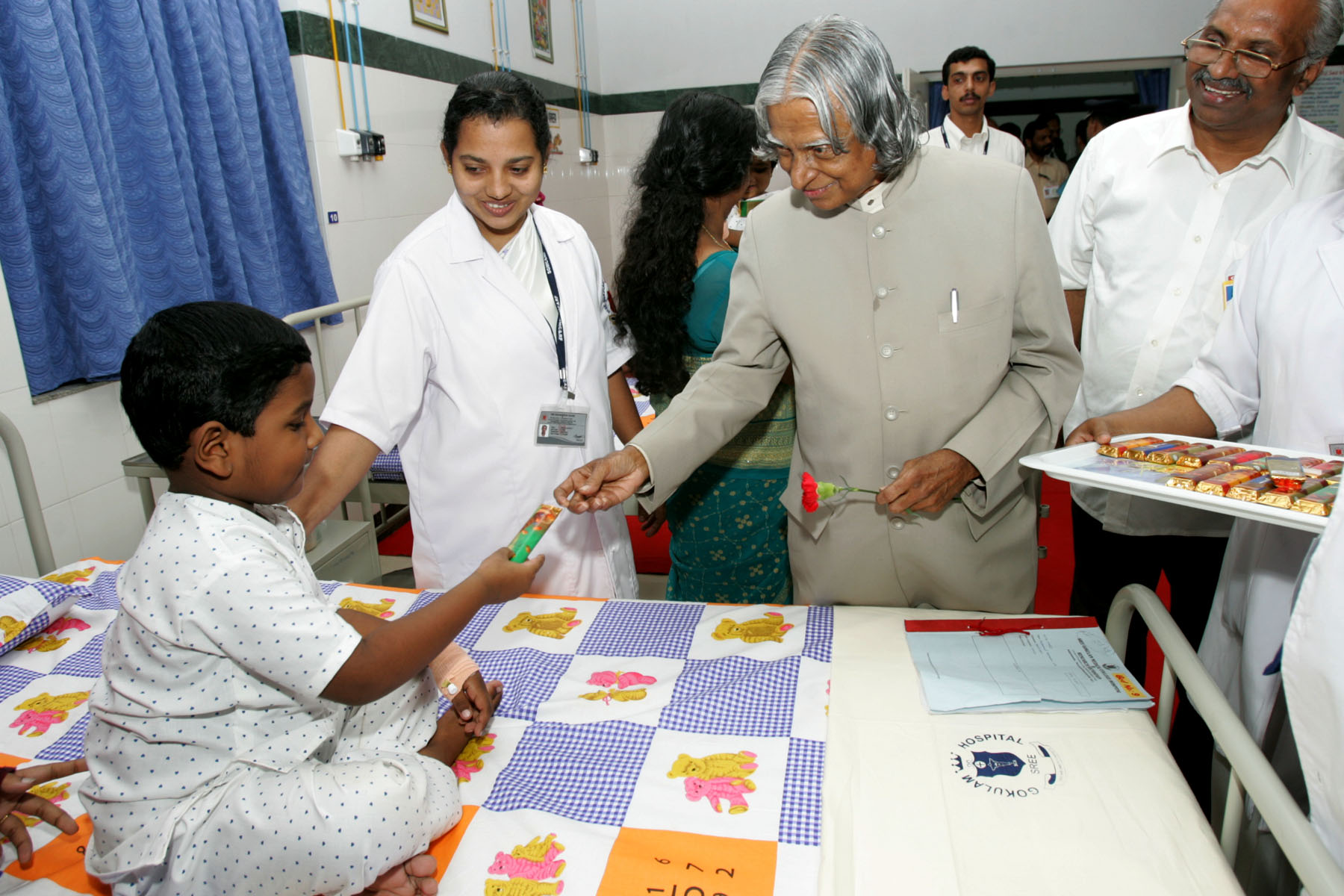

Tuberculosis
There is an effort to bring the entire country under the Revised National Tuberculosis Control Programme (RNTCP). So far, 93% of our country has been brought under this programme and by October the entire country will become part of this programme. This will ensure that at least 75% of the total Tuberculosis cases are detected every year and brought under direct surveillance. The treating agency must ensure that at least 80% success in fully curing the disease is achieved within the year. If this regime is followed continuously for over ten years our tuberculosis load will come down to less than ten per one lakh of population. For achieving this it is also essential to work faster on the development and clearance of new drugs which are in the pipeline.
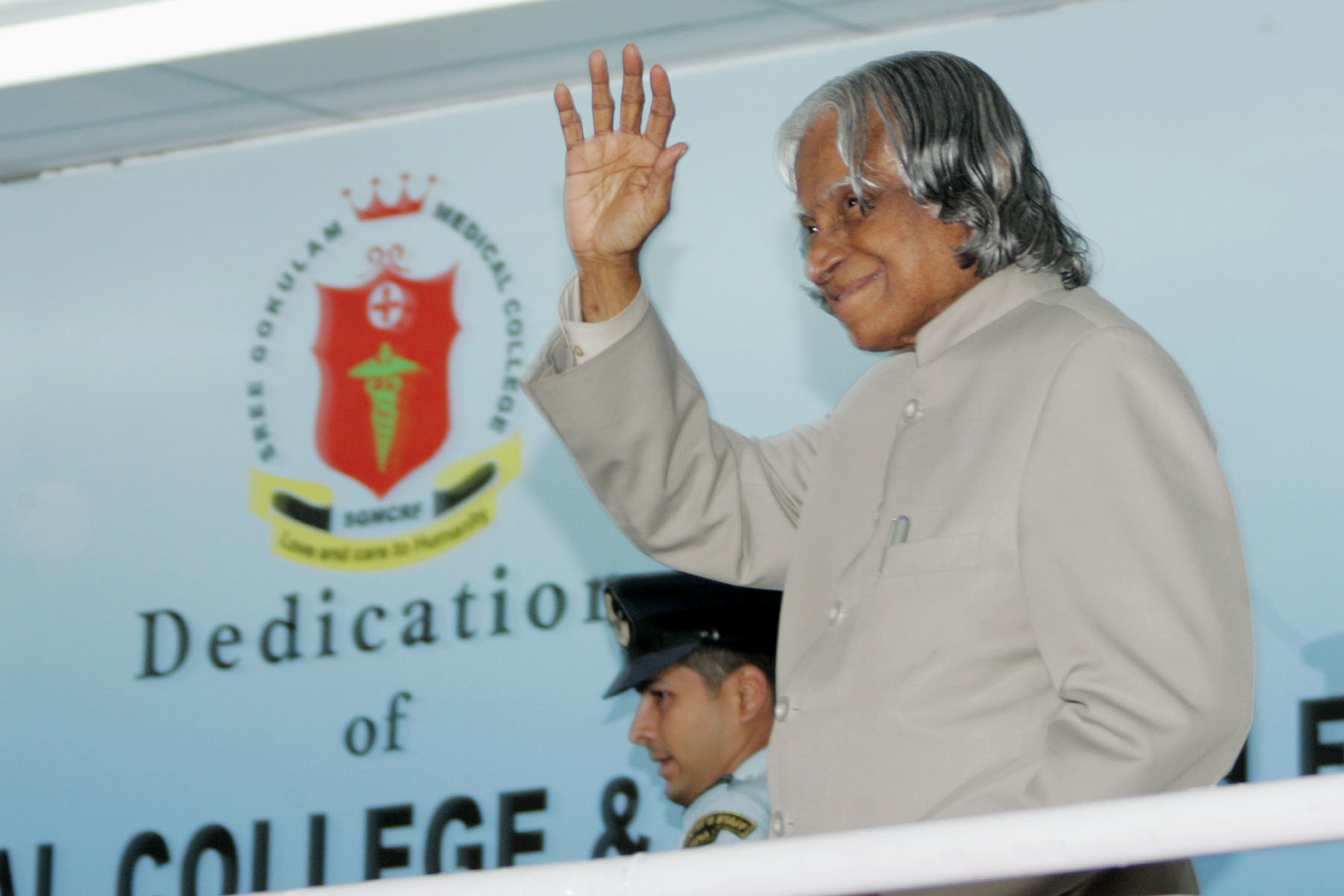

Drug for faster cure of tuberculosis
Modern medicine has always relied on newer scientific inventions. Many of the world inventions have been used by Indian Healthcare Systems, effectively. India has also made significant contributions in developing drugs that are critically required for India. One of the achievements comes from a laboratory of the Council of Scientific and Industrial Research (CSIR). CSIR lab has developed a new therapeutic molecule for Tuberculosis. This molecule has shown the potential to cure TB in around 2 months, as against the standard treatment of 6 to 8 months. This breakthrough is very important. After completing the pre-clinical studies, the molecule transformed into a drug called Sudo-terb is scheduled to undergo clinical trials in humans. This development has been done as a public-private partnership involving the Lupin, the three CSIR Laboratories, namely, Central Drug Research Institute, Indian Institute of Chemical Technology and National Chemical Laboratory, and the University of Hyderabad. It is hoped that the drug will be in the market soon after the clinical trials. In addition to the above, there is also a need to develop a more effective vaccine against tuberculosis. The combined action of surveillance, detection and disciplined treatment have to work together to ensure faster cure of existing cases. Prevention of future cases has to be achieved through R & D efforts of developing new breed of vaccine and medicines. I am discussing with you about these medicines so that you can make use of these medicines on your patients when you pass out of this college. Also I would like to tell you that Ayurveda Hospital which I visited yesterday has also developed powerful Ayurvedic medicines for the treatment of Tuberculosis. I would suggest the students and faculty members to develop an integrated approach to treatment of this disease using the strength of all systems of medicines available in the country. Medical experts suggest that by 2020 water borne diseases will be the greatest hazards for the Indian population.
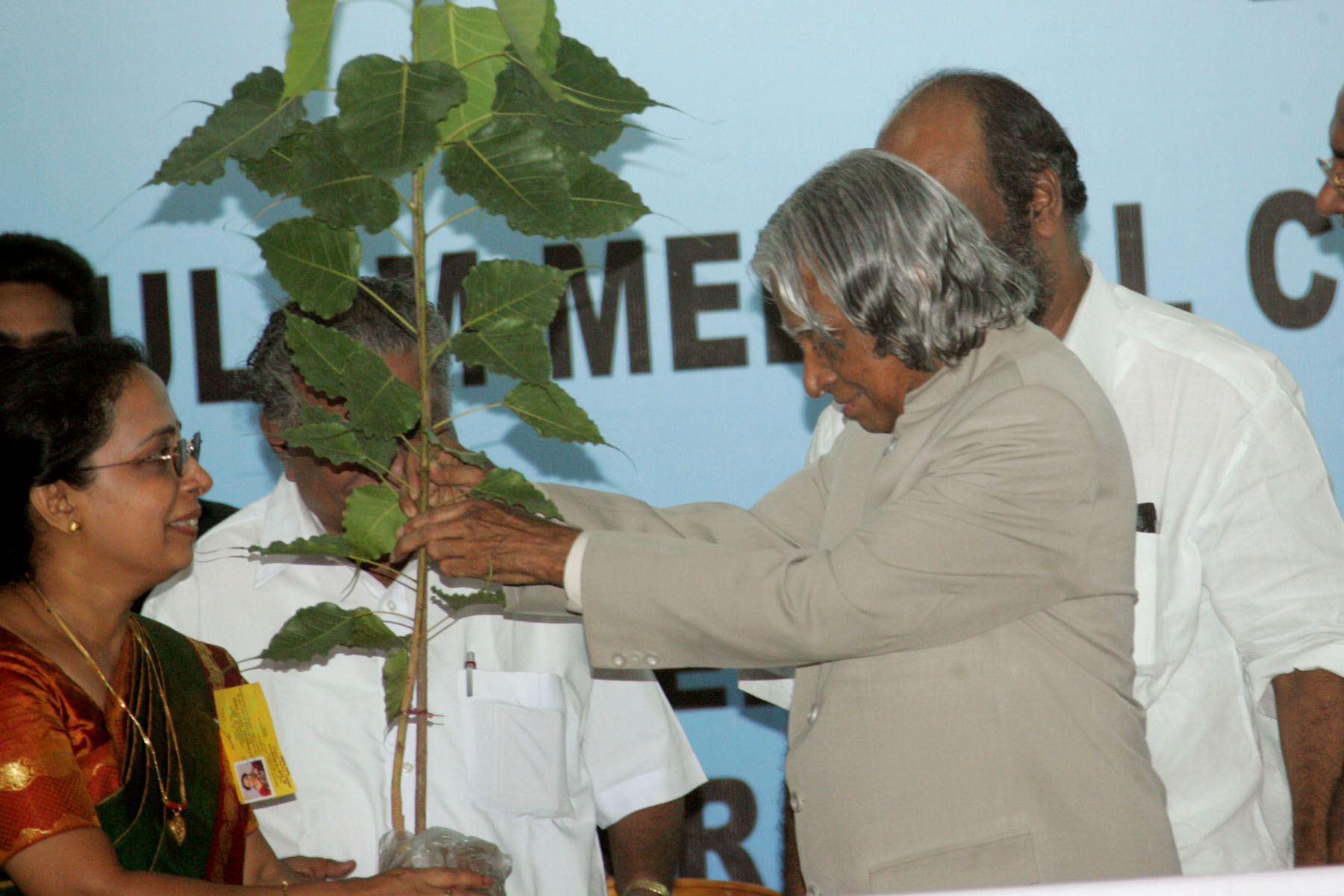

Malaria
Incidence of Malaria in the country has reduced from 22 lakh to 18 lakh in the period 1998-2003. However, the death cases have increased from 644 to 943. I understand that the conventional medicine used for treatment of Malaria namely Chloroquin has become resistant to Falciparum which causes cerebral Malaria. Our scientific community has developed and produced a drug named Arteether from Artemisinin which has been found to be an effective cure for cerebral Malaria. I understand that this drug is being exported to over forty countries. Also, Ranbaxy has acquired a malarial drug molecule and they are progressing towards clinical trials. The fully developed drug will be available in the market soon. This will be another important milestone in the treatment of Malaria.
Over the years I find that in spite of our efforts there is no rapid reduction in the occurrence of Malaria cases in the country. While taking up new projects it is essential to have multi-faceted inter-sectoral collaboration between various partners so that the impact assessment of the project on new type of diseases can be foreseen and suitable preventive action taken to contain the disease. In addition to this we have to improve the surveillance, develop rapid diagnostic kit and use the conventional prevention methods of spraying to control the vector. International Centre for Genetic Engineering and Bio-technology in collaboration with Bharat Bio-tech has developed a vaccine for Malaria which will go for toxicity trials on animals. There is a need to speed up such projects so that they will benefit the entire community who are affected by Malaria in different parts of the country and the world. I would suggest the students and faculty of Sree Gokulam Medical College to track these developments and make it a part of their curriculum.
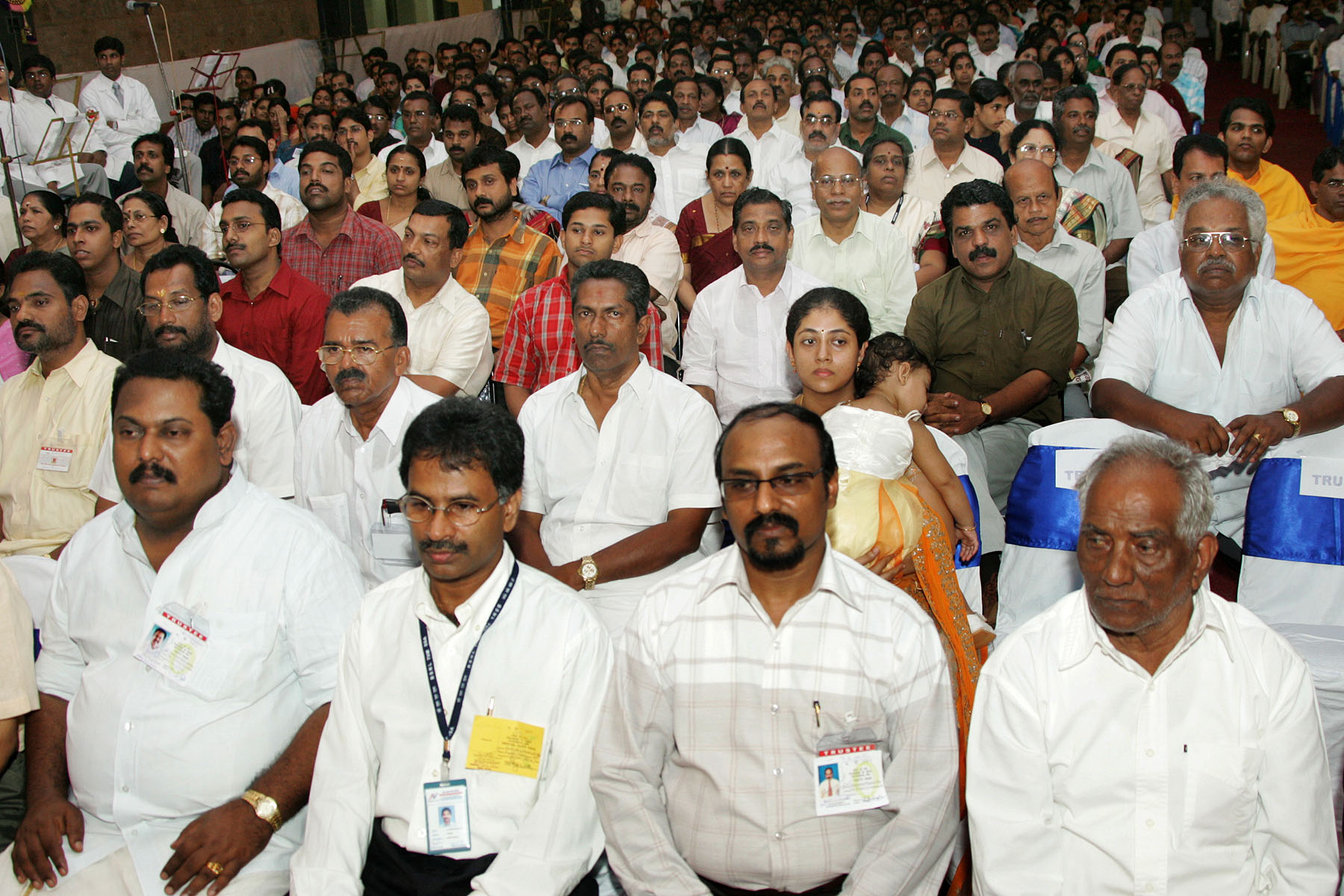

HIV AIDS
It is reported that in India number of HIV infected people is on the increase. It is critical that the transmission of HIV infection is prevented. An effective vaccine that can prevent this disease will be a cost effective tool for control of infectious diseases. There are three Sub Types of Viruses classified as A, B and C. I understand that Indian population is largely affected by sub-type C virus.
There are two candidate vaccines presently considered for use against sub type C virus in our country. In view of the urgency of finding a cost effective vaccine the expert group reviewed the vaccine candidate for HIV sub type C in the pipeline. Adeno-Associated Virus (AAV) based vaccine with HIV-1 sub type C (African strain) developed by Targetted Genetics Corp, USA was found to be in advanced stage of test in different parts of the world. This HIV vaccine (tgAAC09) is now undergoing Phase-I trial for safety and immunogenicity assessment in healthy HIV uninfected volunteers at National AIDS Research Institute, Pune.
The Indian vaccine has been developed by scientists from National Institute of Cholera and Enteric Diseases in collaboration with National Aids Research Institute, Pune and Therion Biologics, USA. This is a recombinant vaccine containing six genes from HIV 1-C strain. This vaccine was developed from the virus isolated from National Aids Research Institute, Pune. This will go into Phase-I trial in healthy uninfected adults at Tuberculosis Research Centre, Chennai during this year. Both these programmes are being progressed as a joint venture between ICMR, National Aids Control Organisation (NACO) and International Aids Vaccine Initiative. In addition to these two vaccines a DNA based vaccine and SFV vaccine are also under development.
It has been reported that scientists at New York University have used Protease inhibitors for treatment of HIV AIDS. When this drug is used alone for four months, in 13 out of 26 patients no detectable virus has been found in the patients blood sample. When protease is used combined with AZT and 3 TC for four months, 24 out of 26 patients, had no trace of AIDS Virus. Presently, it is reported that Protease is being used with NRTI and NNRTI by the medical team successfully. However, the cost of treatment is very high. I would suggest the Medical Community in partnership with pharmacologist must find a cost effective solution for such treatment.
Time has, now arrived to take up this development in a mission mode so that an effective vaccine will be available for our country within the next two years. Simultaneously, I would suggest that the medical community of Sree Gokulam Medical College work with a partner in the development of Anti vaccine for sub-type A and B.
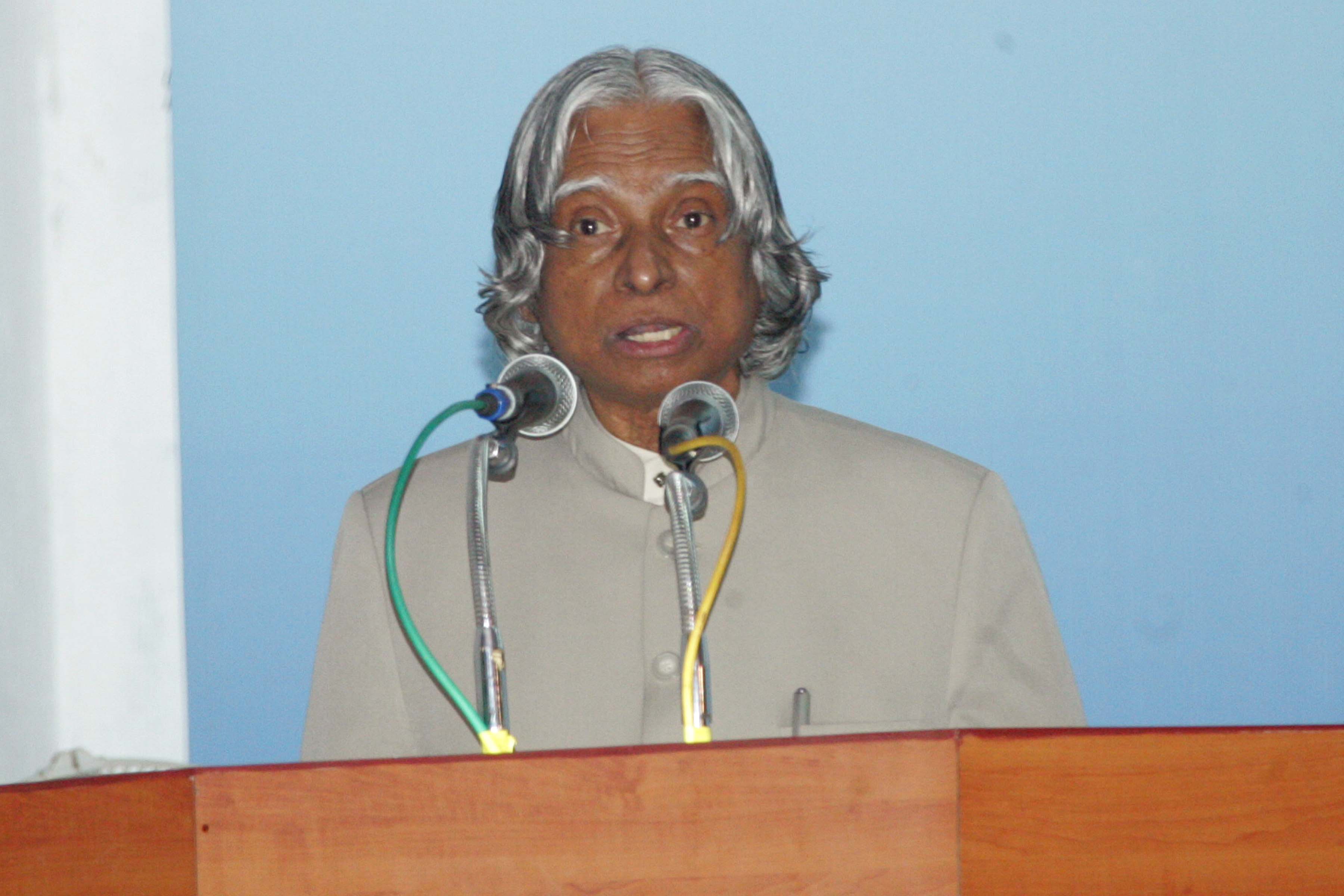

Cancer
The treatment for cancer is prolonged and expensive. A common man in the rural area may not be able to sustain the financial burden. In that respect I am very happy to find that certain institutions like Karunya Nilayam in Kerala is providing free medicines, free noon meals and free accommodation to large number of patients. This is a very important societal mission.
Karunya Nilayam has initiated a programme of screening of children in the rural areas and providing total treatment for over hundred cancer affected children. Such societal missions must be carried out by large number of charitable and philanthropic organisations to remove the suffering of the people from this dreaded disease. As a first step we can contain the spread of the disease through education, to know some of the causes needing life style change and removal of environment hazards. As a second step, citizens can be advised to report immediately to the Doctor if they find anything disturbing in their routine or anatomy. This is where the periodic screening of all women between the age 35 and 60 through mammogram and papsmear will help against breast and pelvic cancer. The faculty members of Sree Gokulam Medical College along with the students can carry out such screening programme in this region as a societal mission. Advancement in cancer treatment has resulted in the development of precision radiation and tumor targeted therapies. Latest technique uses nano-technology based genetic transfer. The college must incorporate these treatment regimes in their syllabus.
As you are aware, Cancer is a genetic disease caused by the mutation or other changes in the DNA of cells. But no one has done a systematic analysis of all the mutations in various tumours. The word cancer describes a range of at least 200 different diseases. There is a need to create ?Cancer Genome Atlas? project for India which can map all the possible mutations. This will definitely help in the treatment of cancer. I am sure some of the medical students may be interested in such R & D tasks.
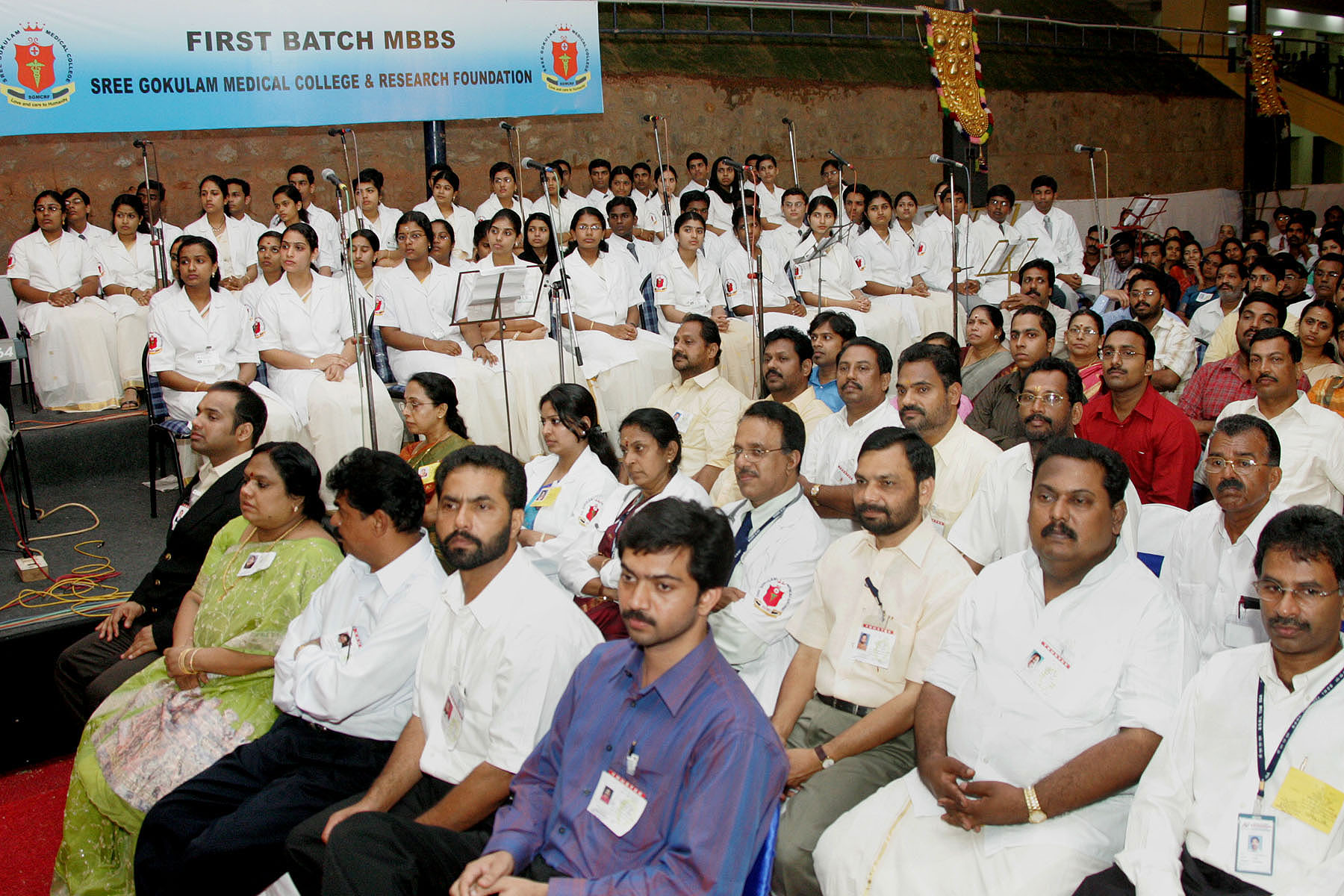

Management of Cardiac Diseases
Multi-dimensional solutions are available for management of the diseases based on my discussion with experts. The solutions include medicinal treatment using Statins, which lowers the cholesterol in the blood by reducing the production of cholesterol by the liver. Statins block the enzyme in the liver responsible for making excess cholesterol. However one has to be careful about the side effects and take adequate precautions while treating the patients. The second is through angiography and angioplasty using stents. Advancements in stents have resulted in the introduction of drug quoted stents which hold a tremendous promise in the near perfect of coronary artery disease. I understand that very soon we may have bio-degradable stents. The next generation stents may be nano-stents. If the heart blockage is severe, valve defect and death of cells in the heart due to less blood supply etc. surgical intervention will be necessary. Now, moving a step further there is a totally non-invasive treatment - EXTERNAL COUNTER PULSATION (ECP), a truly non-operative, non-pharmaceutical, safe and effective treatment which has made big news in the west. ECP is FDA (USA) approved and finds reference in medical and cardiology textbooks. I would like the college to include such new developments in their curriculum.
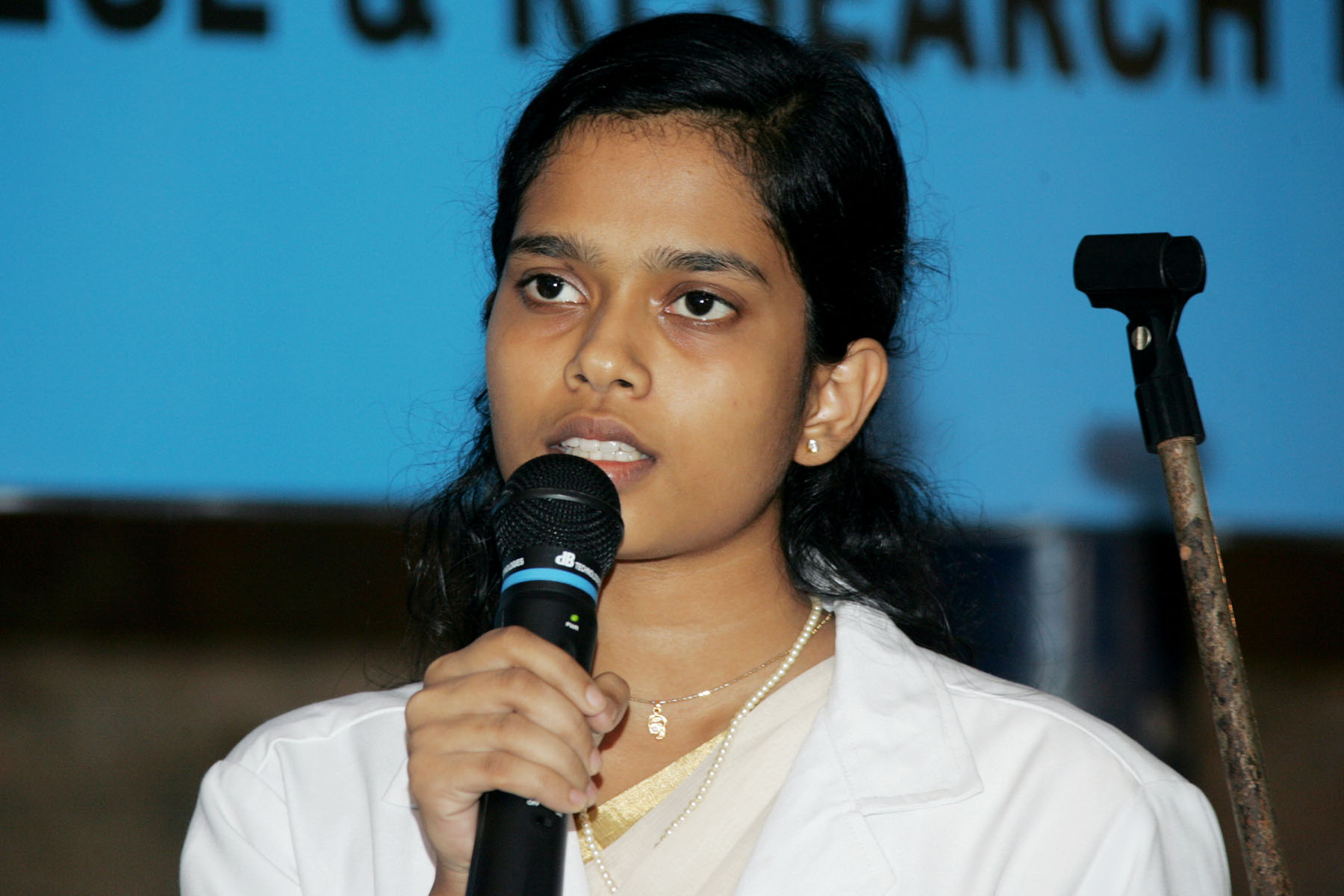

Conclusion
Medical profession is a noble profession and it has always been patient centric. The patient has the right to have right type of medical care, with right type of medical practitioners. How does a patient know, whether he should go to an ENT specialist, or an allergy specialist or a chest specialist? He is made to go from one place to another in search of the right specialists. An integrated mechanism is needed to see that patient without frustration is directed to the right specialist for right diagnosis at the right time at a right cost. The students of this college should keep this aspect in mind while practicing this noble profession in rural and urban areas of our country.
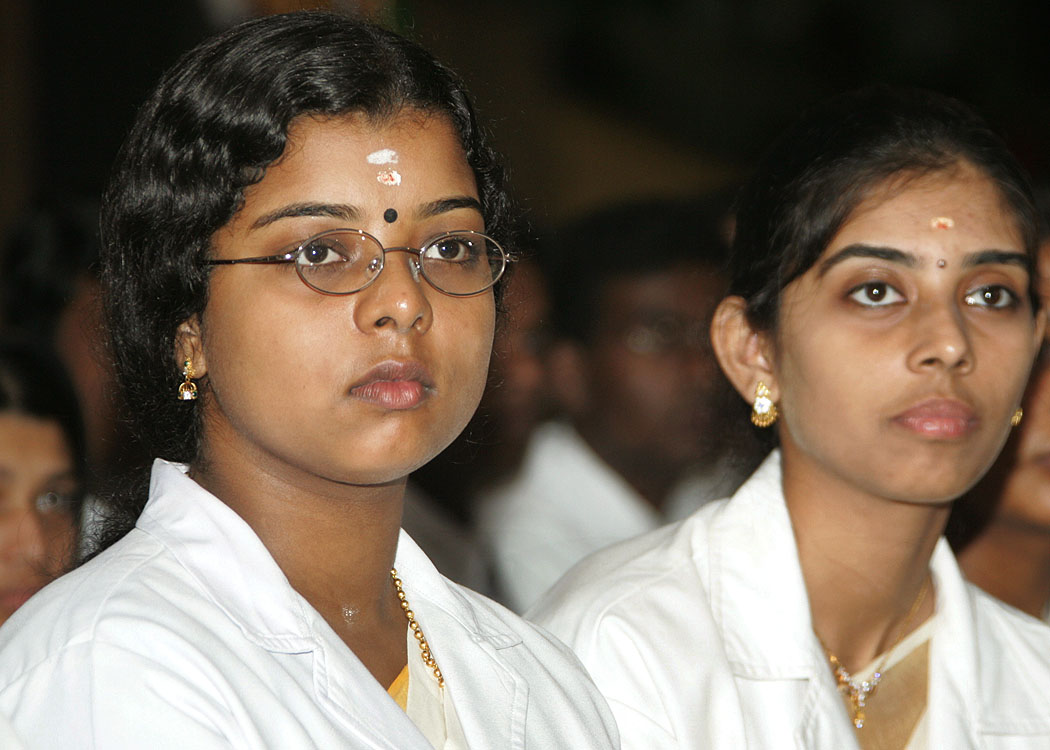
Dear students, with the knowledge and training provided by the Sree Gokulam Medical College, I am confident that you will excel in your medical education and succeed in the mission of removing the pain of the poor in future years.
May God bless you.
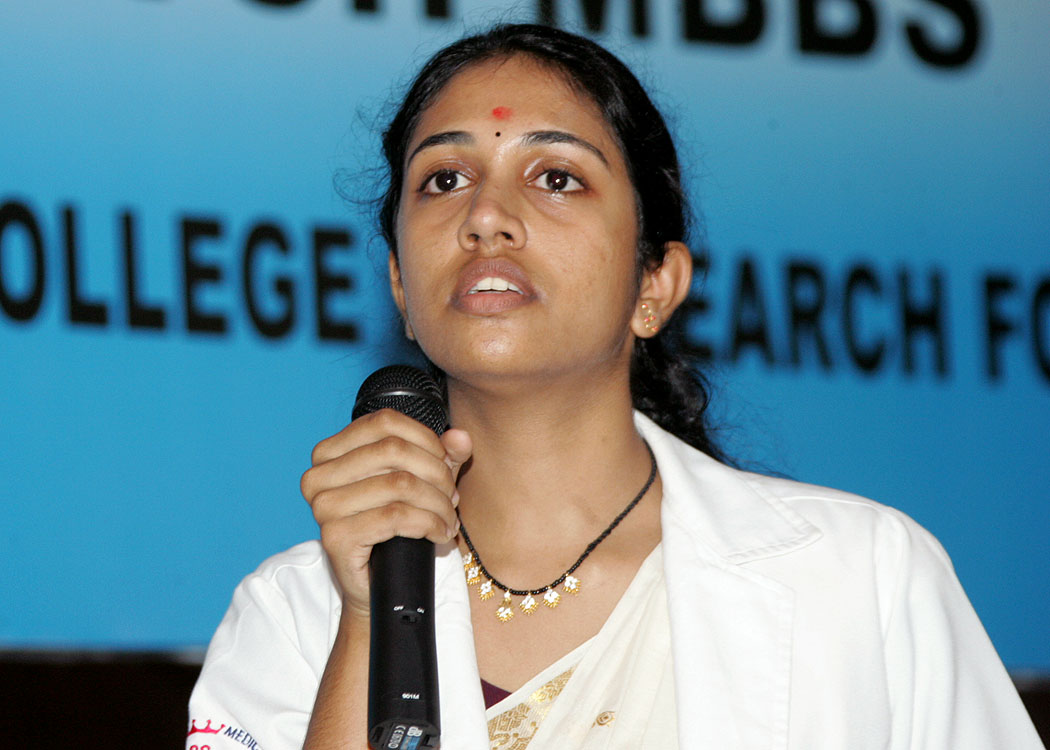
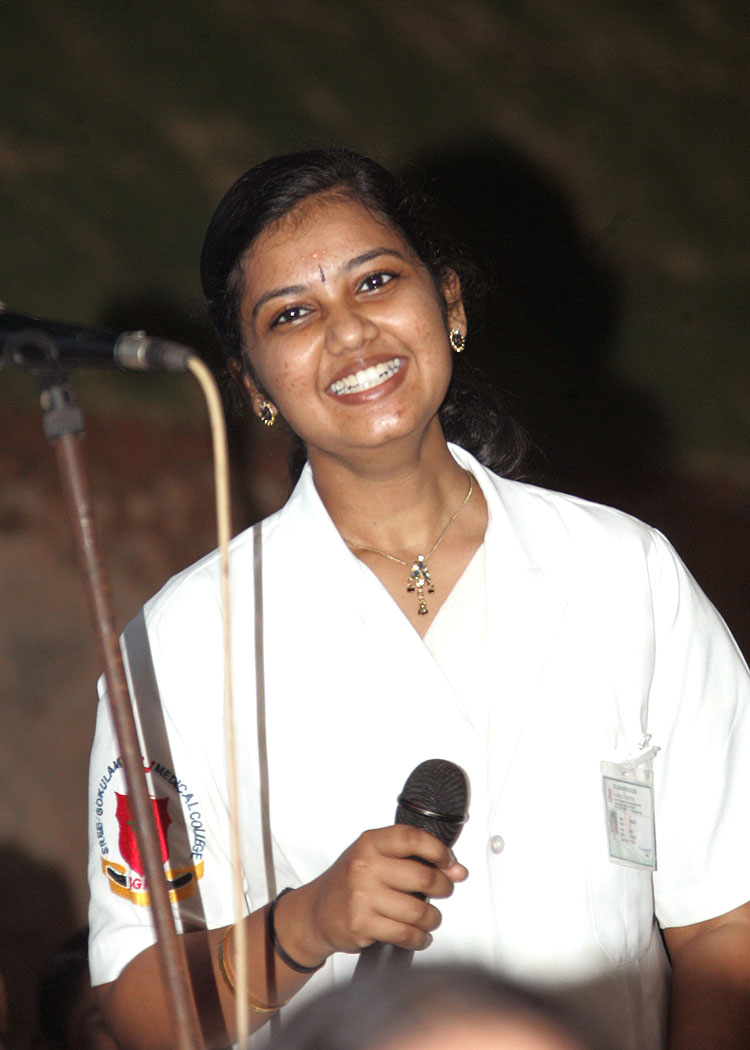
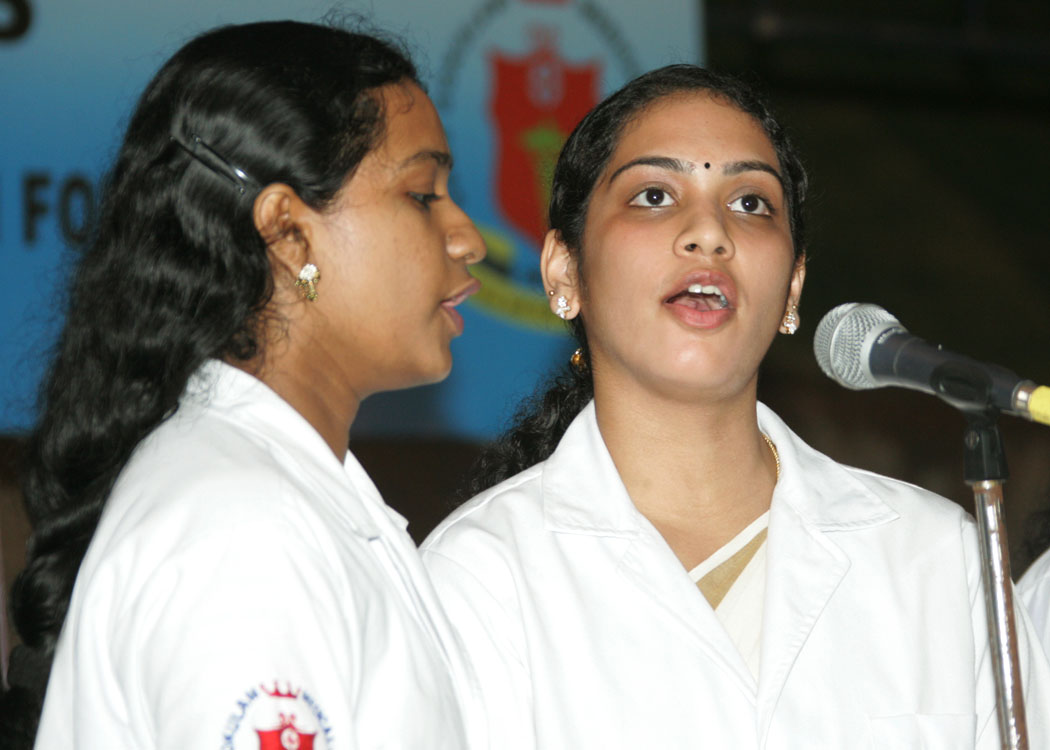
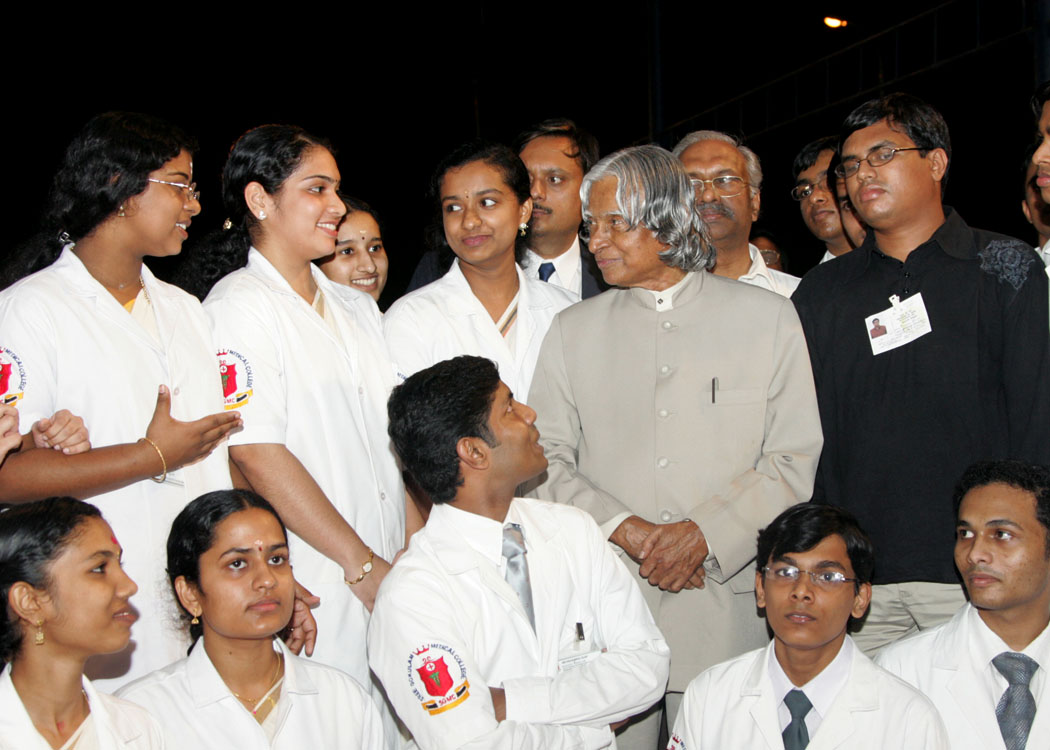
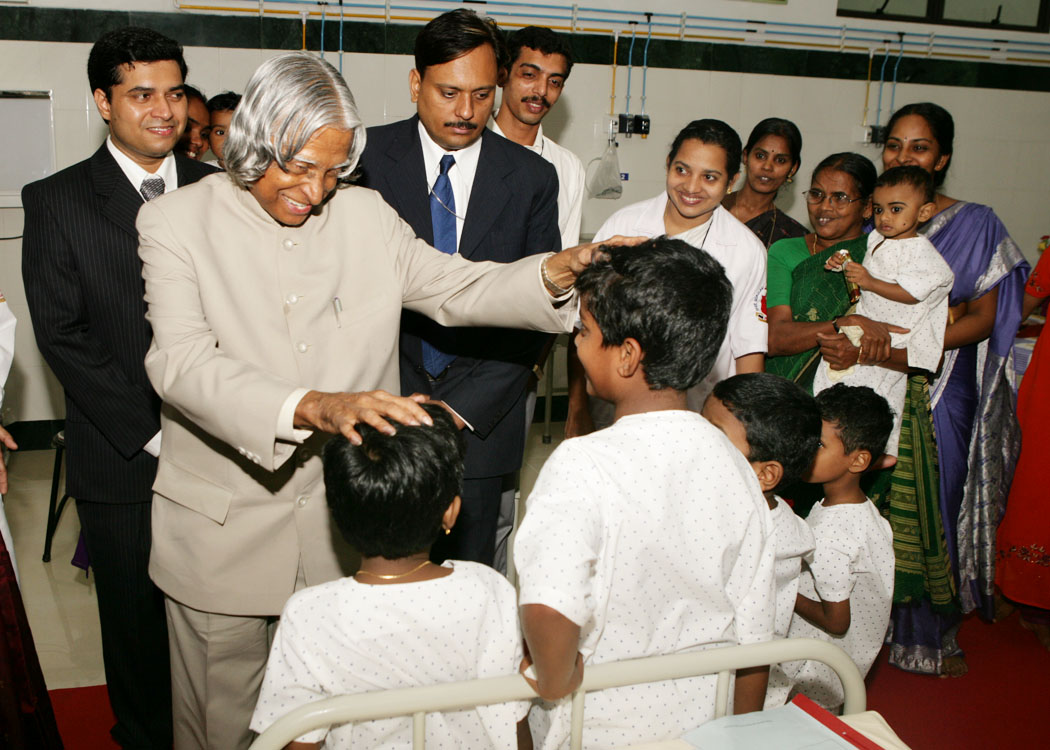
<<Back
|
|